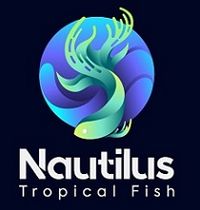Add a vibrant, electric touch to your freshwater aquarium with the Green Kubotai Rasbora, a true gem among nano fish. Native to slow-moving streams in southern Thailand and Myanmar, these rare and stunning fish are known for their glowing, lime-green coloration that shimmers under aquarium lighting. Their small size and peaceful nature make them perfect for nano tanks or community setups with other gentle species.
Quick Facts:
-
Scientific Name: Microdevario kubotai
-
Common Names: Neon Green Rasbora, Kubotai Rasbora
-
Origin: Thailand, Myanmar
-
Adult Size: 0.6–0.8 inches (1.5–2 cm)
-
Lifespan: 3–5 years with proper care
-
Temperament: Peaceful, shoaling species
-
Swimming Level: Mid to upper water column
-
Minimum Tank Size: 10 gallons
Water Parameters:
-
Temperature: 72–78°F (22–26°C)
-
pH: 6.0–7.5
-
Hardness: Soft to moderately hard water (2–10 dGH)
-
Tank Setup: Heavily planted tanks with low to moderate flow
-
Lighting: Moderate to high (to highlight coloration)
Diet:
Kubotai Rasboras are omnivores and will readily accept a variety of high-quality micro foods, such as:
-
Crushed flake food
-
Micro pellets
-
Baby brine shrimp
-
Daphnia
-
Cyclops and other micro frozen foods
Feeding a varied diet enhances their health and intensifies their coloration.
Behavior & Compatibility:
Green Kubotai Rasboras are peaceful and shy when kept in small numbers, but when kept in groups of 6 or more, they become active, confident, and display beautiful schooling behavior. Ideal tank mates include:
-
Other small rasboras and tetras
-
Dwarf corydoras (e.g., pygmy corys)
-
Small peaceful shrimp (e.g., Amano, Neocaridina)
-
Otocinclus catfish
Avoid keeping them with large or aggressive fish.
Why Choose the Green Kubotai Rasbora?
-
Striking neon green color rarely seen in freshwater fish
-
Peaceful and easy to care for
-
Excellent for aquascapes and nano tanks
-
Active schooling behavior adds movement and interest
Recommended Group Size:
Minimum 6, but 10+ is ideal for natural behavior and best visual effect.
Note: These fish may appear pale or stressed during shipping but will regain their full color within a few days in a well-maintained aquarium.

